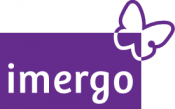Risk. The word itself can be enough to trigger a cascade of anxious thoughts, conjuring images of precarious tightrope walkers, financial crashes and that gut-wrenching feeling of uncertainty. It’s no surprise risk has developed such a negative reputation. But is that reputation entirely deserved? This article explores why risk is so often maligned, delves into the essential roles of risk literacy and risk oracy and advocates for a more nuanced and ultimately more productive understanding of its place in progress, innovation and personal development.
One of the primary reasons risk is perceived so negatively stems from our innate human desire for certainty and control. We naturally gravitate towards predictability, seeking the comfort of a well-laid plan. Risk, by its very nature, disrupts this desire, introducing the possibility of undesirable outcomes. This aversion to the unknown served our ancestors well, helping them avoid potentially dangerous situations. This is reinforced by social narratives that often focus on the negative consequences of taking risks, from business failures splashed across headlines to personal setbacks whispered in hushed tones. News cycles, with their inclination for the dramatic, tend to highlight these failures, sometimes overshadowing the quieter, less sensational successes that emerge from calculated risks.
The language we use around risk also plays a significant role in shaping our perceptions. We often talk about ‘mitigating risk,’ ‘avoiding risk’ and ‘minimising risk,’ all of which frame risk as something to be eliminated, like a troublesome weed. This reinforces the idea that risk is inherently bad and should be avoided. Financial institutions, while providing a vital service, can inadvertently contribute to this perception by understandably emphasising downside protection and loss aversion. Their messaging, while prudent, can sometimes inadvertently amplify the negative connotations associated with risk.
However, a closer and more objective examination reveals that risk isn’t inherently negative; it’s simply a fundamental part of life. Indeed, risk is inextricably linked to progress. Every significant advancement in human history, from the invention of the wheel (a risky proposition at the time!) to the development of life-saving vaccines (also a risk, albeit a calculated one), involved taking risks. Organisations that don’t take risks stagnate, becoming complacent and eventually declining. Individuals who avoid all risk limit their potential for growth, missing out on opportunities and experiences that could enrich their lives.
Consider the entrepreneur launching a new business. They face a daunting array of risks, including financial losses, market uncertainty and competitive pressures. Yet, without individuals willing to take these risks, innovation would grind to a halt, and economic progress would be severely hampered. Similarly, an artist experimenting with a new style or a scientist pursuing a groundbreaking theory is taking a risk. They may face criticism, rejection, or even failure, but the potential rewards – artistic recognition, scientific breakthroughs – are often worth the gamble.
On a personal level, taking calculated risks can lead to significant growth and self-discovery. Leaving a comfortable job to pursue a passion, moving to a new city to broaden horizons, or even striking up a conversation with a stranger – these all involve a degree of risk, but they can also lead to exciting new chapters in our lives, opening doors to unforeseen opportunities and enriching experiences.
The essential roles of risk literacy and risk oracy
Two crucial skills for navigating the complex world of risk are risk literacy and risk oracy. Risk literacy involves the ability to understand, evaluate, and act on risk-related information. It’s about developing the knowledge, critical thinking skills and analytical tools necessary to make informed decisions in the face of uncertainty. Someone with low risk literacy might overestimate the likelihood of a rare but sensational event, like winning the lottery, while simultaneously underestimating the risks of more common but less dramatic events, like neglecting their physical or mental wellbeing.
Risk oracy complements risk literacy by focusing on the ability to communicate about risk effectively. This includes being able to explain complex ideas clearly and concisely, present different perspectives persuasively, and engage in constructive dialogue about uncertainty. Effective communication is essential for making sound decisions, both individually and collectively. It’s about telling the story of risk in a way that resonates with different audiences, fostering understanding and collaboration.
Seeking guidance: The role of ‘Oracles’ and expert judgement
In complex and uncertain situations, we often seek guidance from ‘oracles’ – individuals or sources we perceive as having greater knowledge, experience, or insight. These can be experts in a particular field, experienced mentors, sophisticated algorithms, or even trusted advisors. While oracles can be invaluable resources, providing valuable perspectives and expertise, it’s vital to remember that they are not infallible. Their predictions are still subject to inherent uncertainty, and their own biases, however unintentional, can influence their judgments. A balanced and prudent approach involves carefully considering the advice of oracles while also developing our own risk assessment skills, critical thinking abilities and independent judgement.
A balanced approach to risk management: Finding the sweet spot
So, how do we challenge the often-negative perception of risk and cultivate a more balanced and productive approach?
First, we need to adjust our language and mindset. Instead of focusing solely on mitigating risk as if it were an enemy to be vanquished, we should also emphasise the potential rewards of taking calculated risks, framing risk as an opportunity for growth and advancement. In addition to discussing the downsides of risk, we should also talk about ‘embracing uncertainty,’ ‘seeking opportunities’ and ‘maximising potential’ to provide a more balanced and rounded context.
Second, we need to foster a culture that encourages experimentation, learning from failure, and celebrating resilience. Not every risk will pay off, but every setback, if analysed and learned from, provides invaluable lessons that can inform future decisions and improve our judgement.
Third, we need to recognise that risk is not a monolithic entity. There are different types of risks, some more significant and potentially damaging than others. Learning to assess risk objectively, considering both the potential rewards and the potential consequences, is crucial. This involves developing a robust framework for risk assessment that considers both quantitative factors (data, statistics, probabilities) and qualitative factors (expert opinions, contextual information, potential impacts).
Fourth, improving risk literacy and, crucially, risk oracy is paramount. Education and training programmes can equip individuals with the skills they need to understand, evaluate, manage and communicate about risk effectively. More crucially, it gives them confidence to operate in conditions of uncertainty, when faced with having discussions and making decisions.
Finally, we must acknowledge the inherent limitations of our own knowledge and seek diverse perspectives. Consulting with experts, considering different viewpoints and being open to new information and alternative interpretations can help us make more informed and robust decisions.
While the negative perception of risk is understandable, it’s ultimately counterproductive and limits our potential. Risk is not something to be feared or avoided at all costs; it’s something to be understood, managed intelligently and even embraced strategically. By challenging the negative connotations surrounding risk, improving risk literacy and risk oracy, and adopting a more balanced and nuanced approach, we can unlock our potential for innovation, growth, and progress, both individually and as a society.
The future belongs not to those who avoid risk altogether, but to those who understand it, manage it effectively and leverage it strategically to create something better. It’s about finding that sweet spot between careless abandon and paralysing caution, a place where calculated risks, informed decisions and effective communication pave the way for a more fulfilling, prosperous, and exciting future.

